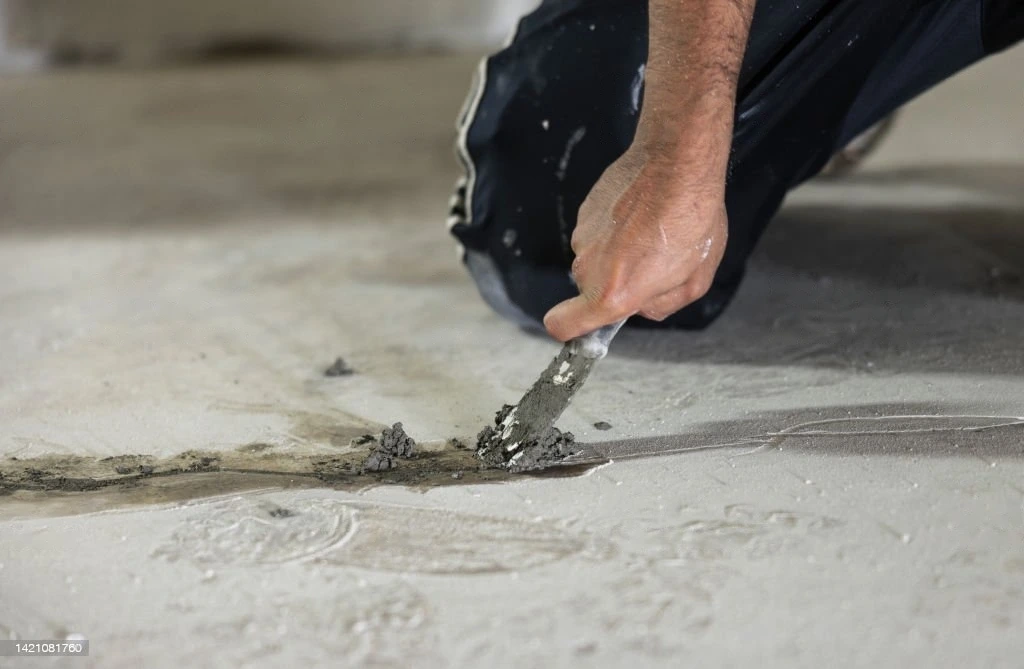So, what is stamped concrete? Essentially, it’s a decorative concrete surface imprinted with a pattern or texture to create the appearance of brick, stone, or other materials. This effect is achieved through concrete sidewalk stamping. Which involves pressing molds or stamps onto the surface of the wet concrete before it dries and hardens.
Stamped concrete is an innovative and stylish way to give your home or business a unique look that sets. It apart whether you’re looking to add curb appeal to your driveway or create a stunning patio in your backyard. Stamped concrete offers a versatile and durable option to help you achieve your goals.
One of the main purposes of stamped concrete is to enhance the aesthetic appeal of outdoor spaces. Stamped concrete sidewalks can give your home a unique and stylish look while providing a smooth and safe surface for pedestrians. Stamped concrete patios can also create an inviting outdoor space for relaxing or entertaining guests.
However, stamped concrete isn’t just about looks. It also offers some practical benefits, such as increased durability and resistance to wear and tear. When installed and maintained properly, a stamped concrete sidewalk can withstand heavy foot traffic, extreme weather conditions. Other environmental factors that can cause traditional concrete to crack or deteriorate over time.
Is Stamped Concrete Slippery?
Stamped concrete is a popular choice for homeowners and businesses who want to enhance the look of their sidewalks and driveways. While it provides an attractive finish, many people are concerned about stamped concrete’s safety, particularly when it comes to slipperiness. In this article, we’ll explore the question. “Is stamped concrete slippery?” and provide some answers that can help you make an informed decision about whether or not to use concrete sidewalk stamping for your next project.
First, it’s important to understand that slipperiness can be a concern with any concrete surface, not just stamped concrete. However, some steps can be taken to reduce the risk of slips and falls, such as using a non-slip additive in the sealant or applying an anti-slip coating.
When it comes to stamped concrete specifically, the texture and pattern of the stamping can play a role in how slippery the surface is. A deep texture or more pronounced pattern can provide some traction, while a smoother finish may be more slippery. Factors such as weather conditions and water or ice can also affect slipperiness.
Overall, weighing the benefits of stamped concrete sidewalks against the potential safety concerns is important. By understanding the factors contributing to slipperiness and taking steps to mitigate them. You can create a beautiful and functional outdoor space with stamped concrete.
What Is Stamped Concrete?
Stamped concrete is a popular option for homeowners and businesses looking to enhance the appearance of their outdoor spaces. With concrete sidewalk stamping, you can transform a plain and drab concrete sidewalk into a beautiful and eye-catching feature that adds value to your property.
So what exactly is stamped concrete? Essentially, it’s a decorative concrete technique that involves pressing a pattern or design into freshly poured concrete using special stamps. The stamps can create a variety of textures and designs, ranging from natural stone to brick to wood.
One common application of stamped concrete is for sidewalks, where it can be used to mimic the look of more expensive materials like slate or cobblestone. By opting for stamped concrete sidewalks instead of these natural materials. You can achieve a similar look at a fraction of the cost.
In addition to its aesthetic benefits, stamped concrete is durable and low-maintenance, making it a great option for high-traffic areas like sidewalks. With proper installation and care, a stamped concrete sidewalk can last for many years and withstand the elements and heavy use.
Overall, stamped concrete is a versatile and cost-effective option for adding beauty and functionality to your outdoor spaces. St-stamped concrete is worth considering whether you want to upgrade your sidewalk or add flair to your patio or pool deck.
How Long Does Stamped Concrete Last?
Stamped concrete is popular for sidewalks, driveways, patios, and other outdoor spaces. This versatile material is durable and long-lasting and can also be customized to resemble various textures, patterns, and colors. If you’re considering concrete sidewalk stamping or installing a stamped concrete sidewalk. You might be wondering how long you can expect it to last.
The lifespan of stamped concrete depends on some factors, including the quality of the installation. The type and quality of the concrete used, and the level of maintenance and care it receives over time. Generally, a properly installed and maintained stamped concrete sidewalk can last 25 to 30 years or more.
However, some factors can impact the longevity of your stamped concrete sidewalk. For example, heavy foot traffic, exposure to harsh weather conditions. The use of deicing agents can all take a toll on the surface over time. That’s why it’s important to work with an experienced and reputable concrete contractor who can guide you on the best materials and maintenance practices to help ensure the longest possible lifespan for your stamped concrete sidewalk.
In this blog post, we’ll explore how long stamped concrete lasts and give some tips for maintaining your stamped concrete sidewalk to keep it looking great for years. So, let’s dive in!





